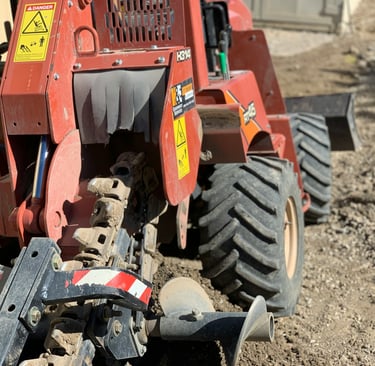Lease Financing: Solving Immediate Equipment Needs
Discover how lease financing can solve your equipment needs with lower costs, tax benefits, and flexibility. Learn the steps to secure leasing today.
ASSET LEASINGEXPANSIONFINANCING OPTIONSINCREASE PROFITS


As a business owner, securing the right equipment quickly is crucial for your operation's growth and efficiency. Lease financing offers a practical solution to meet these immediate equipment needs without straining your budget. Whether you run a medical practice, a construction company, or a real estate development firm, lease financing can provide the tools you need with manageable monthly payments.
In this article, you'll learn what lease financing is, the benefits it brings to your business, the types of equipment that can be leased, and the steps to secure lease financing. With this knowledge, you can make informed decisions to keep your operations running smoothly and efficiently.
Understanding lease financing can help you expand your business capabilities while maintaining financial stability. By taking advantage of this financing method, you can ensure that your business has access to the necessary equipment to operate effectively and stay competitive.
Key Takeaways:
1. Lease financing allows you to use equipment without purchasing it outright.
2. Leasing provides flexibility in managing equipment needs, with options to return, renew, or purchase the equipment at the lease's conclusion.
3. Leasing often results in lower upfront costs, conserving cash for other expenses and potential tax advantages by deducting lease payments as business expenses.
4. Fixed monthly payments aid in better budget management and preserve credit lines, offering financial flexibility.
5. Lease financing involves identifying needs, researching companies, preparing documents, submitting applications, and reviewing and signing a lease agreement.
What Is Lease Financing?
Lease financing is a method where you can use equipment without buying it outright. Instead of paying the full price upfront, you make regular payments to a leasing company over a set period. Think of it like renting, but with the option to own the equipment at the end of the lease term, depending on the agreement.
The leasing company buys the equipment and then leases it to you. During the lease term, you’re responsible for maintaining and using the equipment. At the end of the lease, you often have options: you can either return the equipment, renew the lease, or purchase the equipment for its remaining value. This flexibility makes lease financing a useful tool for managing your business's equipment needs.
Lease financing can apply to various types of equipment, from complex medical machinery to everyday office supplies. It allows businesses to stay updated with the latest technology without the financial burden of direct purchases.
Benefits of Lease Financing for Equipment Needs
Lease financing offers several advantages that can make managing your equipment needs easier and more cost-effective. Here are some key benefits:
1. Lower Upfront Costs: You don’t need to pay the full price of the equipment right away. This means you can conserve your cash and use it for other essential expenses.
2. Flexibility: Leasing agreements can be tailored to your business’s needs, with options to upgrade, own, or return the equipment at the end of the lease term.
3. Tax Advantages: Lease payments may be deductible as a business expense. This can potentially reduce your taxable income and save money.
4. Access to New Technology: With leasing, you can easily upgrade to newer models and keep your equipment up-to-date. This is especially important in fields like healthcare, where technology advances rapidly.
5. Better Budget Management: Fixed monthly payments make it easier to predict and manage your expenses. This reduces the risk of unexpected financial strain.
6. Preserve Credit Lines: Leasing allows you to preserve bank credit lines for other needs or emergency use, giving you more financial flexibility.
Understanding these benefits can help you decide if lease financing is the right choice for meeting your equipment needs while maintaining financial health.
Types of Equipment That Can Be Leased
Lease financing suits various types of equipment, making it versatile for many industries. Here are some examples of the equipment you can lease:
Medical Equipment: Healthcare facilities often need the latest technology to provide top-notch care. Leasing allows you to get medical devices like MRI machines, X-ray equipment, and patient monitors without huge upfront costs.
Construction Equipment: For real estate developers and construction companies, leasing heavy machinery such as excavators, bulldozers, and cranes can be more cost-effective than buying. This way, you get the equipment when you need it without committing large sums of money.
Office Equipment: Businesses always need updated office equipment, such as computers, printers, and furniture. Leasing office equipment can help keep your workspace modern and functional without a large initial investment.
Specialty Equipment: For niche industries, leasing specialized tools and machinery is a practical option. Whether it’s lab equipment for research or customized manufacturing machines, leasing provides access to the tools you need.
Leasing different types of equipment ensures that your business stays efficient and competitive, regardless of your sector.
Steps to Secure Lease Financing
Securing lease financing involves several steps, but the process is straightforward. Here’s how you can get started:
1. Identify Your Needs: Determine what type of equipment you need and the specifications required for your business operations. Having a clear idea will streamline the process.
2. Research Leasing Companies: Look for reputable leasing companies that specialize in the type of equipment you need. Check their rates, terms, and customer reviews.
3. Prepare Documentation: Gather necessary documents such as your business financial statements, credit history, and details about the equipment you want to lease. Having these prepared can speed up the approval process.
4. Submit Application: Fill out the lease application with accurate information about your business and the equipment. Submit it along with the required documentation.
5. Review Lease Agreement: Once approved, review the lease agreement carefully. Pay attention to terms such as payment schedule, lease duration, maintenance responsibilities, and end-of-lease options.
6. Sign Agreement: After understanding the terms, sign the lease agreement. Be sure to keep a copy for your records.
7. Receive Equipment: The leasing company will purchase the equipment and provide it to you. Ensure everything is in working order before finalizing the delivery.
Following these steps will help you secure the equipment you need efficiently and keep your business operations running smoothly.
Conclusion
Lease financing provides a practical solution for meeting your immediate equipment needs. It offers flexibility, lower upfront costs, and the option to stay updated with the latest technology. Whether you’re in healthcare, construction, or any other field, lease financing can help you manage your resources effectively.
Understanding the benefits and types of equipment available for lease can assist you in making well-informed decisions. By following the steps to secure lease financing, you ensure a smooth process from application to receiving the equipment.
Ready to upgrade your business operations without the hefty costs? Contact Want Capital Now to explore tailored financial services that can meet your specific needs and propel your business forward. Contact us today to get started on leasing the equipment you need to grow.


